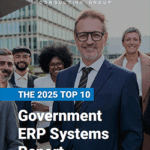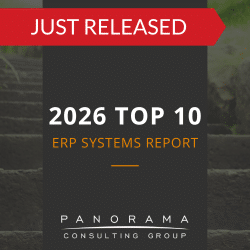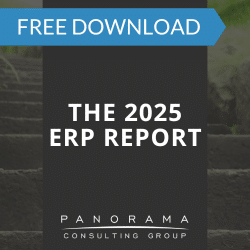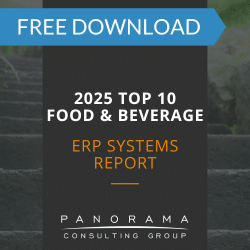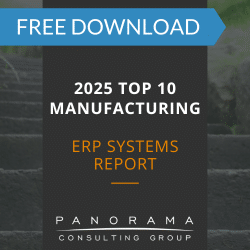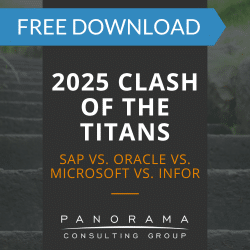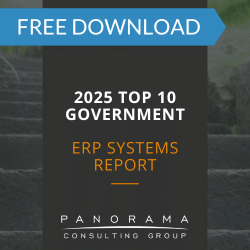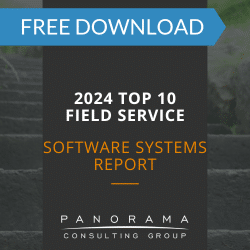- ERP demos often present an idealized view that hides cost risks tied to licensing, configuration, and future scalability.
- Financial red flags typically show up in vague pricing models, understated implementation effort, and hidden integration costs.
- Executives can mitigate cost traps by using real business scenarios in demo scripts, requiring line-item pricing, and involving finance early in the ERP selection process.
- Independent business software consultants help bring clarity to ERP implementation costs, especially when evaluating top ERP systems.
ERP demos are polished, convincing, and tailored to make the system look like an ideal fit for your organization. When you’re sitting across the table from a software vendor, what you’re watching is performance—not full disclosure.
For executives overseeing digital transformation, this is where strategic risk takes root. A compelling demo may mask deep misalignments—especially on cost.
Whether you’re exploring a list of ERP systems or narrowing your focus to top ERP systems for manufacturing, ensuring financial clarity around ERP implementation costs is inarguably important.
Today, we’ll look at how to scrutinize an ERP demo to avoid cost traps and ensure pricing transparency.
Contemplating litigation?
We have multiple software expert witnesses available for provision of reports, depositions, and testimonies.
ERP Demo Red Flags
ERP demos often present a simplified version of your business—one that hides both process complexity and cost volatility. They can give the illusion that the product is ready to deploy, tailored to your operations, and aligned with your budget. But when you dig into the details, many of these assumptions unravel.
Here are three red flags that often hide in plain sight during these presentations:
1. Lack of ERP Pricing Transparency and Ambiguity in Licensing Models
ERP pricing models are rarely straightforward. Demos often feature full-featured versions of the software, without clarifying which functions belong to higher licensing tiers or incur additional fees.
For organizations evaluating top enterprise resource planning systems, this lack of transparency can lead to costly surprises after selection.
Subscription models may sound scalable, but licensing constraints often emerge later—when you try to onboard seasonal users, expand to new locations, or activate features that weren’t included in your initial quote.
What to ask: Request a full pricing breakdown by module, user type, and transaction volume. Clarify which features shown in the demo are covered in your tier and which are not.
2. Overlooked ERP Implementation Cost and Complexity
Vendors often understate the effort and financial investment involved in replicating demo workflows within your actual business environment.
For example, if you’re exploring manufacturing ERP systems, demo data may reflect simplified product structures, rather than complex bills of materials or variant configurations.
From custom development to change management, ERP implementation services can absorb far more budget than initially anticipated. Our business software consultants often find that the true driver of cost isn’t licensing—it’s process alignment and organizational readiness.
What to ask: Ask which demo elements rely on preconfigured data versus custom logic. Have the vendor estimate implementation hours for your actual processes, and ask what role their team will play post-sale.
3. Deferred Disclosure of Integration and Ownership Costs
ERP demos rarely portray the system as it will exist in your ecosystem.
For instance, integration with your CRM, SCM system, HR platform, or financial tools is usually oversimplified or skipped entirely.
The result? A false sense of how turnkey the solution will be. Without visibility into middleware, data harmonization, or API development, your internal teams can’t model the total cost of integration or support.
What to ask: Request references for past integration work with your systems. Ask for estimated costs and timelines.
How Executives Can Avoid Cost Traps After ERP Demos
The moment after a demo ends is often when the real financial risks begin. The enthusiasm is high. The solution looks like a fit. And the details seem “close enough.” However, this is when due diligence matters most.
Here are four moves that will strengthen your financial clarity and protect your organization’s long-term investment:
1. Assign a Financial Task Force for Demo Review
Keep your financial and procurement team involved throughout ERP selection—not just during contracting. This team can flag discrepancies between demo functionality and licensing coverage, avoiding misunderstandings before contracts are signed.
2. Use Real Data and Business Scenarios
Ask vendors to demo their system using your own business scenarios—especially if you operate in regulated sectors.
For example, manufacturing ERP software often looks intuitive in a demo, but behaves differently when tasked with actual production planning or compliance workflows.
Running live scenarios helps highlight cost triggers like custom code, integration gaps, or module upcharges.
3. Require Itemized Proposals with Cost Attribution
A detailed, itemized proposal is your best protection against budget inflation. Whether you’re evaluating the best ERP system for manufacturing or a supply chain platform, clarity around costs enables better cost forecasting and governance.
Have the vendor tag each line item to a specific feature shown during the demo. Your enterprise technology consulting partner can then cross-check these against your system requirements.
4. Host a Post-Demo Financial Debrief
Gather your team immediately after vendor demos to capture pricing concerns, licensing questions, and integration assumptions. This feedback loop helps your ERP selection team identify hidden risks and create a checklist of clarifications to address before shortlisting vendors.
Learn How to Ensure ERP Pricing Transparency
ERP demos are staged events. That’s not a criticism—it’s a reality. They serve an important role in ERP selection, but they rarely reflect the true cost or complexity of a deployment.
The more confident your executive team becomes based on what’s shown in a demo, the more critical it is to challenge the narrative.
Our business software consultants can serve as an advocate—not a salesperson—and commit to a selection process that rewards long-term value. Contact us below for a free consultation.


